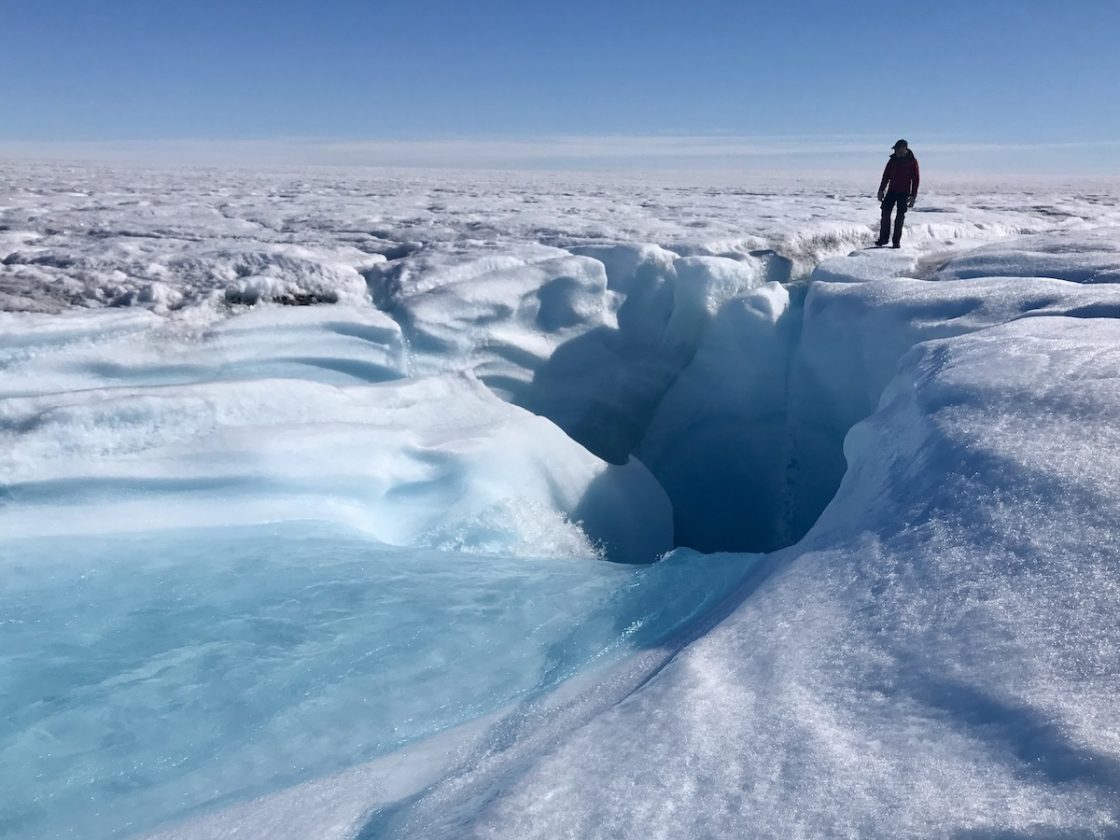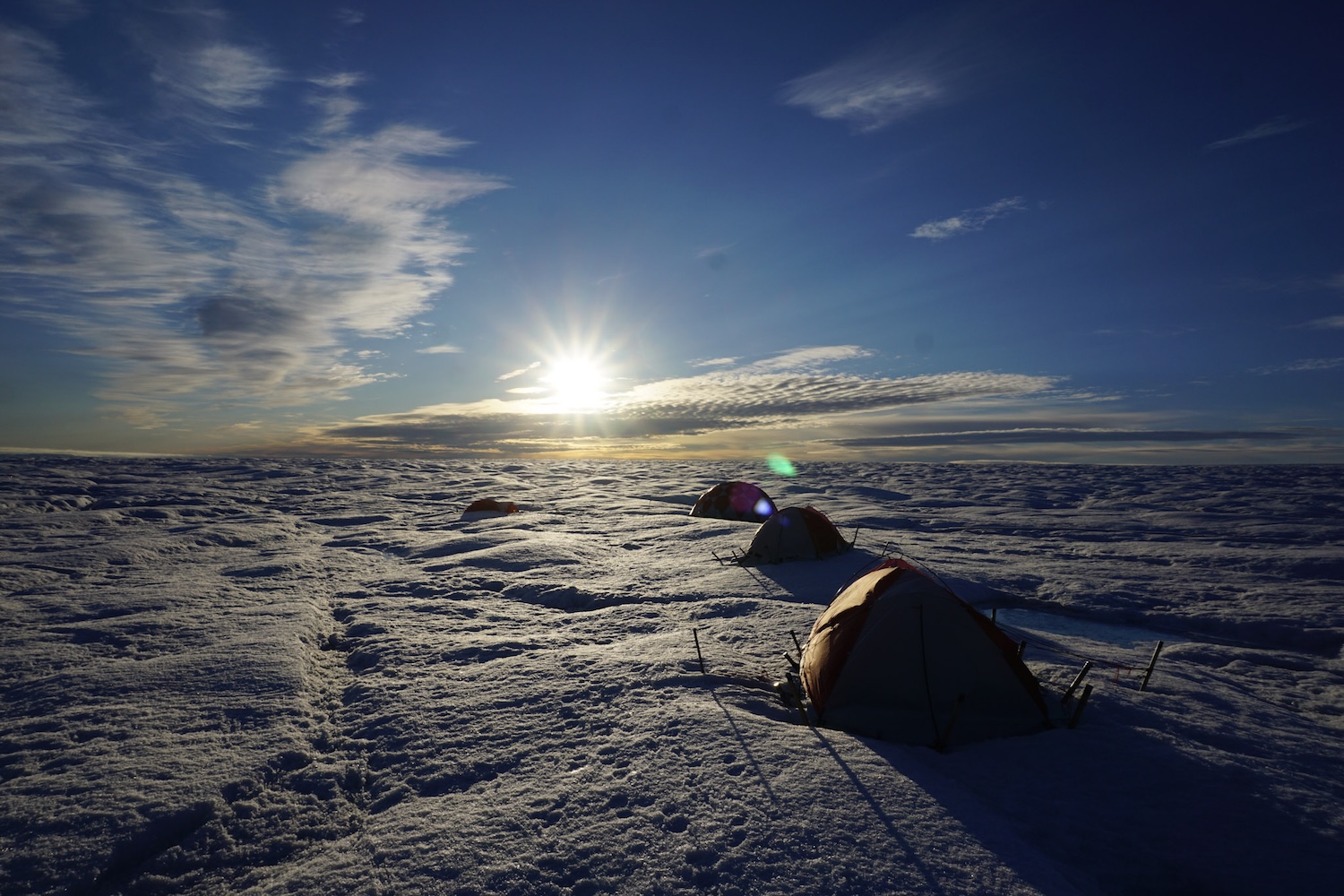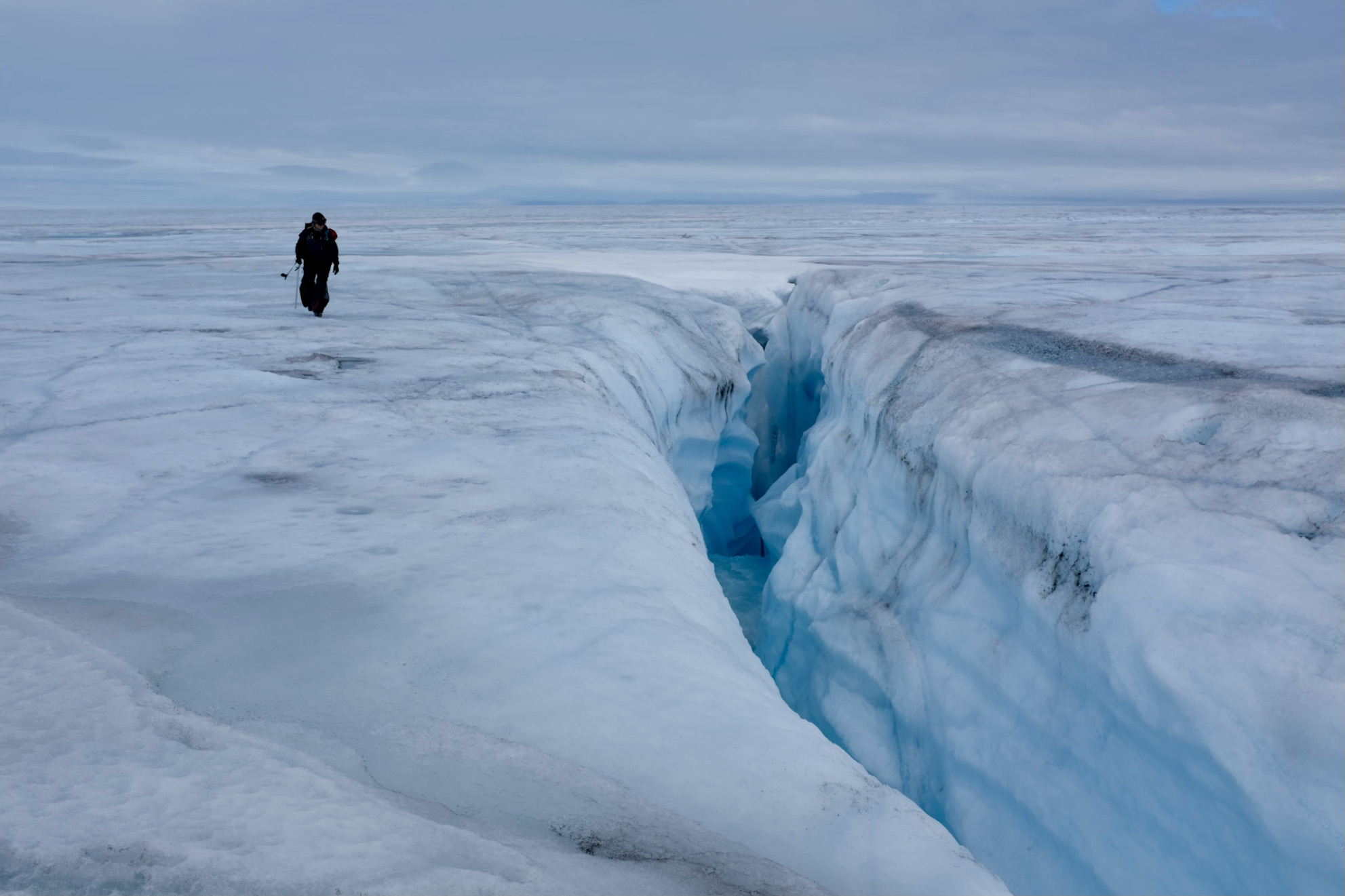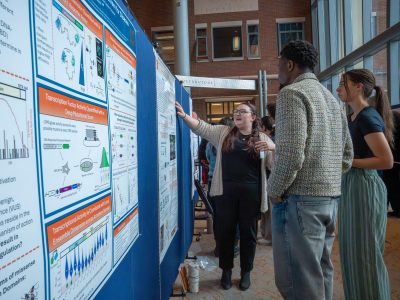
A&S Professor Jessica Mejia will travel to the Paakitsoq Region of the Greenland Ice Sheet to investigate how glacial water systems connect and evolve throughout the summer melt season. (Photo courtesy: Jessica Mejia)
New Research Will Explore Impact of Greenland’s Meltwater on Sea-Level Rise
With global temperatures steadily rising, coastal communities are increasingly aware of the mounting risks posed by climate change. One of the most urgent concerns is sea-level rise, which under high-emission scenarios could reach up to 4 feet by the year 2100. Such an increase would threaten infrastructure, ecosystems and human lives through chronic flooding and land loss. Among the most significant drivers of this phenomenon is the melting of Earth’s ice sheets, making it critically important to understand and accurately predict how these massive ice bodies will respond to a warming climate.
The Greenland Ice Sheet is among the largest contributors to global sea-level rise, accounting for approximately 25% of the total increase. Yet its future behavior remains one of the greatest uncertainties in future sea-level rise estimates. While scientists once believed summer melting would accelerate the ice sheet’s movement toward the ocean, recent research reveals a more nuanced picture. In some cases, meltwater flowing beneath the ice can slow its motion rather than speed it up.
Understanding how these hidden subglacial water systems evolve and how they influence ice sliding is the focus of a new project funded by the National Science Foundation. The research is led by Jessica Mejia, assistant professor in the College of Arts and Sciences’ Department of Earth and Environmental Sciences, in collaboration with assistant professors Grace Barcheck and Riley Culberg from Cornell University’s Department of Earth and Atmospheric Sciences.
“This work is a vital step toward building climate resilience,” says Mejia. “By understanding how meltwater affects ice motion, we can improve models and inform policy decisions that protect vulnerable communities.”

Exploring the Melt-Driven Mechanics of Ice Flow
The NSF funding will support a major field campaign on the western Greenland Ice Sheet, where the team will investigate how meltwater injected beneath the ice reorganizes the subglacial drainage systems and affects ice sliding speeds.
“Our goal is to understand which types of subglacial hydraulic systems control seasonal declines in ice sliding speeds,” Mejia says. “This is essential for making accurate predictions about Greenland’s future mass loss and its contribution to sea-level rise.”
The research will take place in the Paakitsoq Region of Greenland during the summers of 2026 and 2027. The team will deploy a suite of instruments, including a dense seismic array to detect subglacial icequakes, ice-penetrating radar to locate meltwater and GPS stations to measure ice flow. By integrating hydrologic and geophysical data, the researchers aim to capture how subglacial water systems connect and evolve throughout the melt season.
“This is the first coordinated effort to use hydrologic and geophysical methods to monitor a broad region of subglacial connectivity in real time,” Mejia says.

From Isolated Pockets to Flowing Networks
One of the central questions the team hopes to answer is how isolated pockets of subglacial water influence ice flow when they connect to larger drainage systems. By linking surface melt inputs, water flow beneath the ice and changes in ice velocity, the researchers will build a clearer picture of the relationship between melting and sliding.
“Resolving these connections will help us understand subglacial hydrologic controls on ice dynamics,” Mejia says. “It’s about learning how the ice sheet responds to increasing meltwater and what that means for sea-level rise.”
Broader Impacts and Public Engagement
Beyond advancing scientific understanding, the project has significant public outreach components. The team is partnering with the Museum of the Earth in Ithaca, New York, to develop a virtual reality field experience that will allow users to explore the Greenland Ice Sheet and the research being conducted there. The experience will be translated into Greenlandic and shared with the Kangiata Illorsua–Icefjord Center in Ilulissat, Greenland, helping to engage local communities in the science happening in their own backyard.
Students interested in contributing to VR development are encouraged to reach out to Mejia.
The grant also supports the training of graduate students, including Mary LePere, a Ph.D. student, who will participate in the field campaigns and contribute to data analysis.
“This project offers an incredible opportunity for students to work on the front lines of climate research,” Mejia says. “They’ll gain hands-on experience with cutting-edge tools and contribute to findings that have global significance.”


